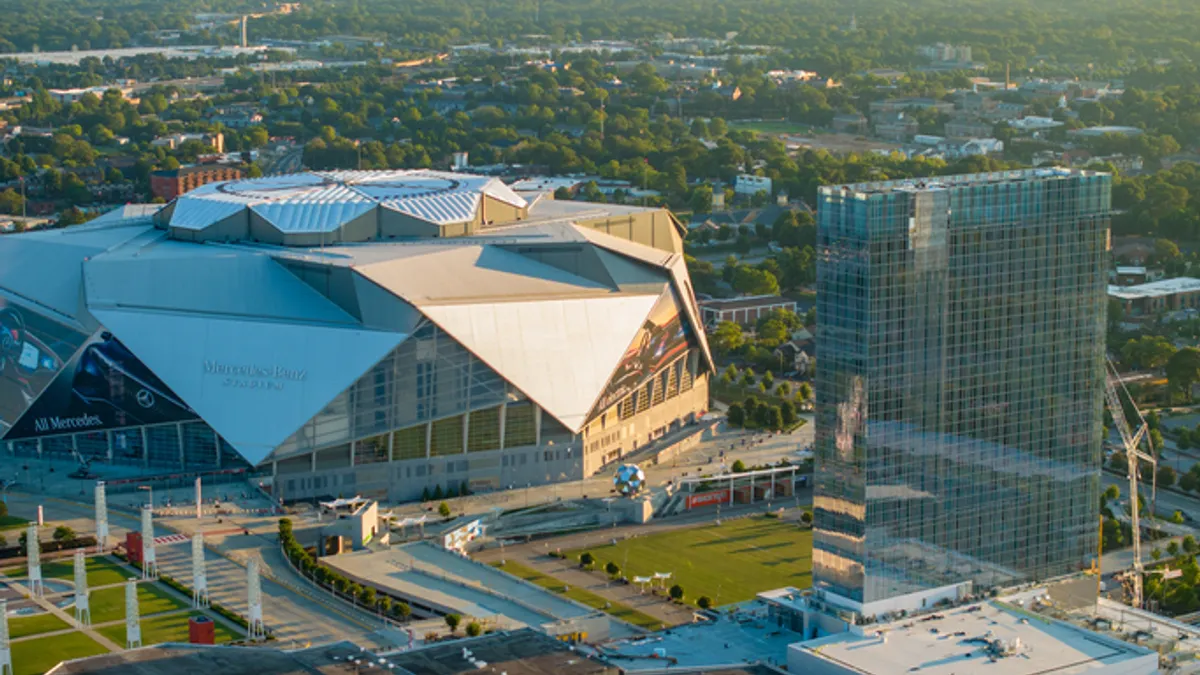Dive Brief:
- Johnson Controls has reduced its absolute scope 1 and scope 2 emissions by 43.8% since 2017, ahead of its 2030 target of a 55% reduction, the firm says in a 2024 Sustainability Report.
- Since 2017, the company has reduced greenhouse gas emissions intensity and energy intensity by 52.5% and 22.5%, respectively, compared with its 2025 target of 25% for each category. The company reported that it has additionally achieved a 27.1% reduction in scope 3 emissions, or those derived from the use of its sold products, exceeding its 2030 target goal of 16%.
- As a result of these reductions, the company is ahead of schedule to reach its goal of achieving net-zero scope 1 and scope 2 emissions by 2040, it says. It has also taken measures to reduce safety incidents and increase volunteer hours in alignment with the UN Sustainable Development Goals, the report notes.
Dive Insight:
The three primary contributors of Johnson Controls’ scope 1 and 2 emissions are energy usage at its global facilities, refrigerant loss in manufacturing and its global fleet, the report says. As a result, Johnson Controls’ emissions reduction strategy involves decarbonizing its facilities, minimizing refrigerant loss in manufacturing, cutting fleet emissions through electrification and efficiency measures, and shifting to renewable energy globally, according to the report.
By cutting 43.8% of scope 1 and scope 2 emissions, the company has eliminated over 473,000 metric tons of absolute GHG emissions across its global operations since 2017, the report says. Johnson Controls says renewable energy now accounts for 42.1% of electricity purchased globally, as it aims to meet or match 100% of its global purchased electricity with renewable energy by 2040.
Highlighting the often-cited figure that buildings account for nearly 40% of all global GHG emissions, Johnson Controls noted that its own facilities accounted for nearly 50% of its total scope 1 and 2 emissions in 2023. Against that backdrop, Johnson Controls launched a facility decarbonization program, which utilizes a cross-functional team to determine cost-effective and impactful plans to achieve net-zero emissions through high-efficiency infrastructure, software, renewable energy and ongoing operations, per the report.
Upgrades and renovations at its 900,000-square-foot manufacturing plant in Norman, Oklahoma, where the program was first launched in 2021, include a central utility plant redesign, building envelope improvements and water conservation measures. The Oklahoma plant is now expected to decrease its annual GHG emissions by 43% and generate $960,000 annual savings by the time of its completion in 2024, the report says.
Johnson Controls says the strategies that have driven its 27.1% reduction in scope 3 emissions include developing low-carbon and energy-efficient products; expanding its OpenBlue building automation system to accelerate its customers’ decarbonization measures and reducing embodied carbon in products that enable customers to build net-zero carbon facilities.
The company also said it is weighing sustainability equal to other key metrics in supplier performance evaluations and requiring suppliers representing 80% of its procurement spend to undergo third-party independent sustainability performance assessments by 2028. Thirty-eight percent of Johnson Controls’ procurement spend — more than 1,600 suppliers — have undergone these third-party assessments, the report says.
Johnson Controls notes that roughly 90% of new product research and development investment was in climate-related innovation, aimed at developing sustainable products and services, exceeding its goal of 75%. Additionally, sustainable revenue made up 57% of total company revenues, as defined by the Corporate Knights Sustainable Economy Taxonomy standard, up from 54% the year prior, the report says.
The company’s 34.6% reduction in recordable safety incidents, compared with its 2017 baseline, exceeds the 25% target established for 2025, with diverse supplier spend reaching $597 million at a rate exceeding revenue growth, compared with its 2023 goal of $495 million. Johnson Controls also recorded 61,521 volunteer hours in 2023, the most the company has recorded since 2017, with 82% of those hours aligning with UN Sustainable Development Goals, according to the report.














